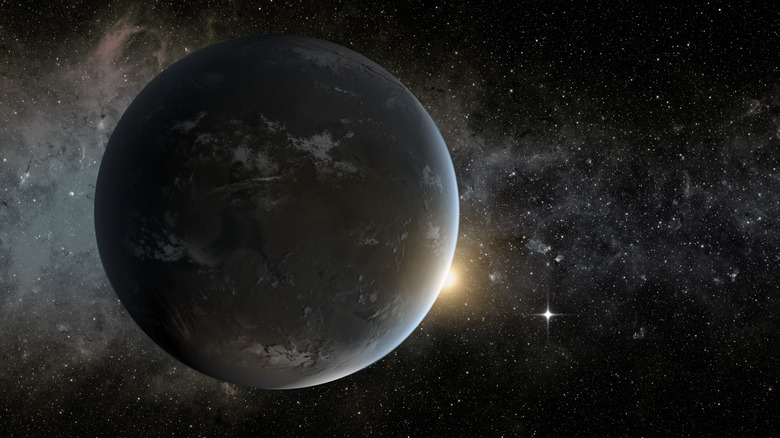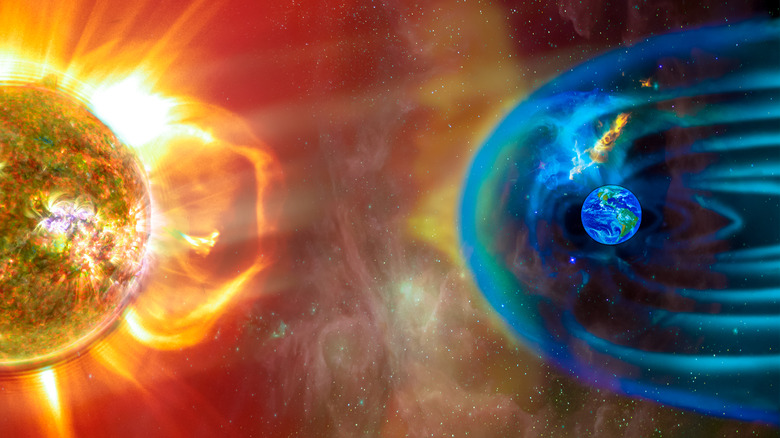What UV Radiation From The 'Goldilocks' Stars Could Really Mean
One of the biggest questions in astronomy today is whether there are planets beyond our solar system which could support life. While there have been thousands of exoplanets discovered to date, relatively few of these meet the criteria to support life as we know it: being warm but not too hot so that there could be liquid water on their surface, having an atmosphere, and being safe from radiation. One approach to hunting habitable worlds has been to look not at planets but at particular types of stars, on the basis that a hospitable star would be more likely to host habitable planets.
Some of the stars that researchers have been most interested in are orange dwarfs, which have been called "Goldilocks stars" because they aren't too bright and short-lived, nor too dim and flare-prone. Instead, they are just right to host life (via Science News). Orange dwarfs are quite different from stars like our sun. These smaller stars live much longer than the expected lifespan of our sun, allowing more time for life to spring forth and evolve around them. They are also dimmer, so it was hoped that it would be easier to spot a planet orbiting around them as the planet passed across their face (via Space.com)
However, recent research is questioning whether these stars are really the ideal cradle for life that we thought they were. The problem is that they may emit large amounts of ultraviolet radiation, which poses a big problem for any lifeform wanting to make a home on a planet orbiting nearby.
The problem of ultraviolet radiation
A new study led by astronomer Tyler Richey-Yowell (via arXiv.org) used data from the Hubble Space Telescope to look at 39 examples of orange dwarfs, also called K stars. This study's researchers found that planets in orbit around K stars are bombarded with more ultraviolet (UV) radiation than previously thought, which could have big consequences for potential human habitability. The K stars gave off a lot of UV radiation when they were young, and this radiation didn't drop off over time the way it does with yellow stars (like our sun) or red stars (which are dimmer).
The issue this causes for habitability is that this UV radiation may interfere with a planet's atmosphere. This radiation can split atoms in the atmosphere, creating charged particles (ions). These particles can be lost into space, gradually siphoning away a planet's atmosphere — which is certainly bad news for said planet's potential development of life.
However, this doesn't mean there is no hope for life to develop on a planet orbiting such a star. A planet with a strong magnetic field — like Earth's magnetosphere – can hold onto its atmosphere even when hit with radiation. Indeed, our planet's magnetosphere is and was essential for life to flourish here, and its presence may even explain why Earth has a rich atmosphere while similar planets like Mars have only a very thin atmosphere.

